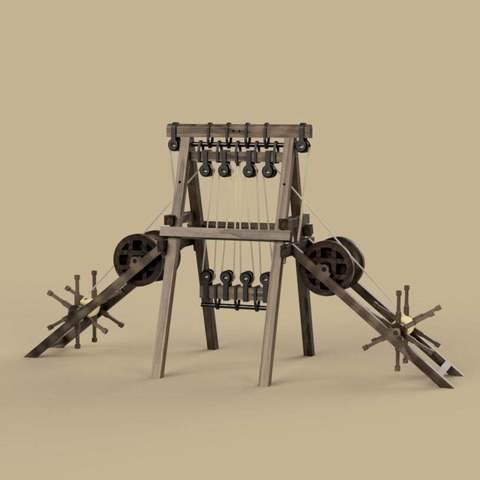
Korean traditional crane
cults3d
[parts list] 1. hayuryang.stl x1 2. hayuryang-deungcheol.stl x4 3. hayuryang-neukcheol.stl x3 4. hoengryang.stl x1 5. hoengryang-deungcheol.stl x2 6. hoengryang-neukcheol.stl x4 7. hwallyun.stl x10 8. jeonhugang.stl x2 9. jungyuryang.stl x1 10. jungyuryang_neukcheol1.stl x4 11. jungyuryang_neukcheol2.stl x1 12. jungyuryang-deungcheol.stl x4 13. jwaugang.stl x2 14. seungryanggak1.stl x2 15. seungryanggak2.stl x2 16. big-hwallyun.stl x2 17. eolle.stl x2 18. eolle-stick.stl x24 19. jangde-and-hyeopgang.stl x2 20. mogang.stl x2 [Assembly guide]https://a360.co/2WPKGaL password: geojunggi [description] A device that lifts heavy objects with minimal force using the pulley principle was invented by Jeong Yak-yong, who referred to a book called "Gigidoseol" imported from China by King Jeongjo. Four pulleys were attached to the top four, and an object was attached under the bottom pulley. A cord that could be pulled in both directions of the back pulley was wound around the water-wheel so that the object could be lifted through the cord connected to the pulley as it turned the wheel. A complete picture of a fully assembled figure and a disassembled picture of each part is displayed on the gauge of Hwaseong Fortress Station. The book lists the type and quantity of equipment made for the construction of Suwon Fortress (Hwasong), and one crane was used, which was made by the royal family and sent down to the construction site. Devices using pulley principles can lift heavy objects with small force. Jeong Yak-yong developed a machine inspired by the book "Gigidoseol" brought from China by King Jeongjo. Four pulleys were attached to the top four, and an object was attached under the bottom pulley. A cord that could be pulled in both directions of the back pulley was wound around the water-wheel so that the object could be lifted through the cord connected to the pulley as it turned the wheel. A complete picture of a fully assembled figure and a disassembled picture of each part is displayed on the gauge of Hwaseong Fortress Station. The book lists the type and quantity of equipment made for the construction of Suwon Fortress (Hwasong), and one crane was used, which was made by the royal family and sent down to the construction site.
With this file you will be able to print Korean traditional crane with your 3D printer. Click on the button and save the file on your computer to work, edit or customize your design. You can also find more 3D designs for printers on Korean traditional crane.
